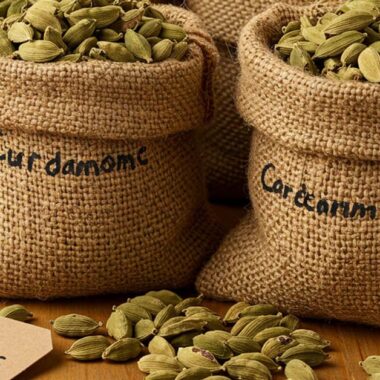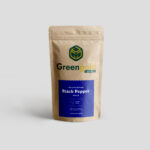Organic cardamom farming thrives on nutrient-rich soil, and composting is one of the best ways to enhance soil fertility naturally. A well-prepared compost boosts plant growth, improves soil structure, and promotes a healthy, disease-resistant crop.
Let’s explore why composting is essential for cardamom farming and how to create the best organic compost for high-quality yields. 🌱✨
✅ 1. Why is Composting Important for Cardamom?
Composting recycles organic waste into nutrient-rich humus, which improves soil health and plant growth.
🌱 Key benefits of composting for cardamom farming:
✔️ Enhances soil fertility by adding essential nutrients
✔️ Improves moisture retention, reducing water stress 💧
✔️ Promotes beneficial microbes for healthy root development 🦠
✔️ Suppresses diseases & pests naturally 🐜
✔️ Reduces dependency on chemical fertilizers 🚫
💡 Fact: Compost-enriched soil increases cardamom yield by making nutrients available slowly and steadily! 📈
♻️ 2. What Can You Use for Composting?
A good compost mix requires a balance of carbon-rich (brown) and nitrogen-rich (green) materials.
🌿 Best compost ingredients for cardamom farming:
✅ Nitrogen-rich (Green) materials:
🍌 Fruit & vegetable scraps
🌾 Fresh grass clippings
🍃 Green leaves & plant cuttings
🦠 Cow dung, poultry manure
✅ Carbon-rich (Brown) materials:
🍂 Dry leaves & twigs
🌾 Rice husks & straw
📰 Shredded newspaper & cardboard
🌰 Coconut husks
🚫 Avoid:
❌ Synthetic chemicals & pesticides
❌ Plastic, metal, glass
❌ Diseased plants or seeds
❌ Oily or cooked food waste
💡 Tip: Maintain a balance of 2 parts brown materials to 1 part green materials for the best results!
🏡 3. How to Make Compost for Cardamom Plants?
Follow these simple steps to create high-quality compost for your farm.
🌱 Step 1: Choose a Composting Method
✅ Open Pile Composting – Best for large farms
✅ Compost Bin or Pit – Controls odor & speeds up decomposition
✅ Vermicomposting (Earthworm Composting) – Produces nutrient-rich worm castings 🪱
🌾 Step 2: Layer the Compost Pile
🔄 Alternate layers of green & brown materials:
1️⃣ First layer – Dry leaves, straw, or small branches (for aeration)
2️⃣ Second layer – Green waste like food scraps & fresh leaves
3️⃣ Third layer – Animal manure or biofertilizers
4️⃣ Repeat layers until the pile reaches 3-4 feet high
💡 Tip: Turn the compost every 2 weeks to speed up decomposition & avoid bad odor!
⏳ Step 3: Wait & Monitor
✔️ Compost takes 2-3 months to fully decompose
✔️ Keep the pile moist but not soggy 💧
✔️ A well-prepared compost should smell earthy 🌍
💡 Tip: If the compost smells bad, it’s too wet—add more dry materials!
🌾 4. Applying Compost to Cardamom Plants
🌿 How & when to apply compost:
✔️ Before planting: Mix compost with topsoil for root strength
✔️ During growth: Apply 2-3 kg of compost per plant every 4-6 months
✔️ Mulching: Spread compost around the base of plants to retain moisture & suppress weeds
💡 Tip: Compost works best with organic mulching (e.g., dried leaves, husks) for long-lasting soil fertility!
🌍 5. Compost Tea: A Liquid Fertilizer for Cardamom
Compost tea is a nutrient-rich liquid fertilizer that improves soil microbes & plant health.
🫖 How to make compost tea:
1️⃣ Soak 1 part compost in 5 parts water for 24-48 hours
2️⃣ Stir occasionally to release nutrients
3️⃣ Strain & spray on plants or use for soil drenching
💡 Tip: Use once a month to promote stronger root growth & disease resistance!
🎯 Final Thoughts: The Power of Composting for Cardamom
Using compost naturally boosts soil health, leading to better growth, higher yields, and premium-quality cardamom! 🌱✨
✅ Reduces dependency on chemical fertilizers
✅ Improves soil fertility & microbial activity
✅ Enhances moisture retention & plant resilience
✅ Supports eco-friendly & organic farming 🌍
Would you like to try composting for your farm? Let’s discuss below! 👇💬
🛒 Looking for High-Quality Organic Cardamom?
👉 Shop Now 🛍️💚












